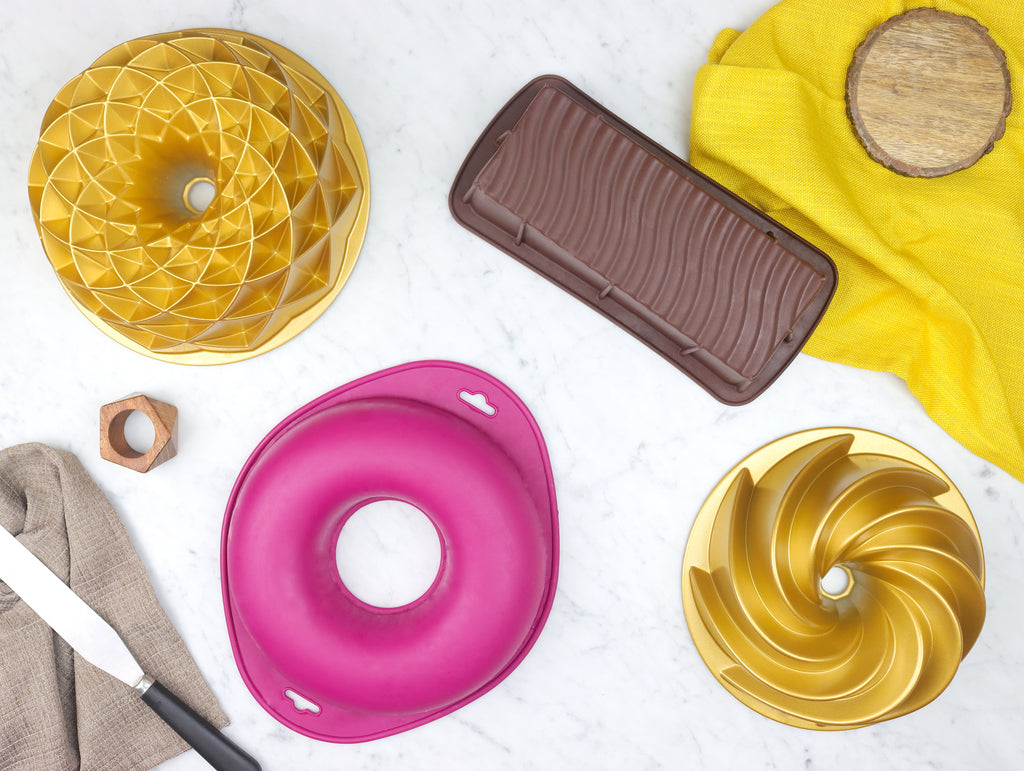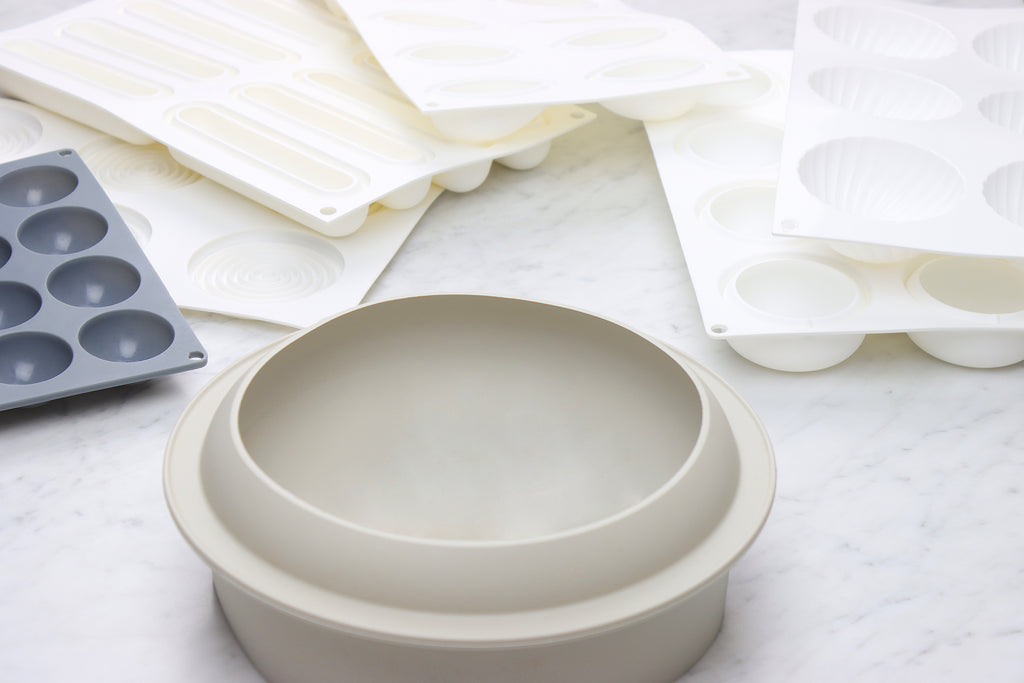
This post may contain affiliate links. Please read our disclosure policy.
WHAT IS FOOD GRADE SILICONE?
Silicone is a man-made inorganic polymer. However, instead of a carbon backbone like plastic, it has a backbone of oxygen and silicon (silicone being the polymer and silicon being a chemical element used to make silicone). It is also composed of carbon and hydrogen.
Silicon is the 14th element on the periodic table that makes up silica. Which is a natural compound (also called silicon dioxide) that composes over a quarter of the planet's crust and can be found in most rocks, clays, and sands.
During the chemical reaction, silica and carbon are heated together at elevated temperatures to produce silicone. Being formed from the organic compounds of carbon and hydrogen, the material is often referred to as hydrocarbon.
Food-grade silicone is a non-toxic polymer that does not contain petroleum-based chemicals, BPA, BPS, or fillers. However, not all silicones are created equal. Be aware that some manufacturers might still use fillers in their products to reduce costs. Fillers, also called plastic fillers are used to fill the space under a silicon layer.
Luckily, there is a simple way to recognize if a silicone product (mold, food container... etc) contains fillers or not. Choose a flat surface of the product, twist it, and if white shows through that means fillers were added to the product. Pure silicone does not change color once twisted.
---

HOW TO USE SILICONE MOLDS?
Silicone molds are highly functional. They can go from the oven to the fridge, the freezer, the microwave, or the dishwasher with temperatures ranging from -76°F (-60°C) to 445°F (230°C).
Silicone Food Containers
Silicone is a great option when it comes to food storage products. They are reusable, easy to store, lightweight and unbreakable. From salads to soups, snacks, or water, you can store almost everything in them. And most importantly, they are better for our planet and our health.
Moreover, if you love cooking sous-vide, they are also very useful.
Recommended Silicone Food Containers
- Nomader Silicone Water Bottle (22 oz)
- Nefeeko Silicone Water Bottles Portable (18 oz)
- Stasher Silicone Sandwich Storage Bag (15 oz)
- Zip Top Silicone Cup Containers (3-Piece)
- Zip Top Silicone Bag Containers (3-Piece)
- Zip Top Silicone Containers Set (8-Piece)
- Stasher Stand-Up Silicone Food Container (56 oz)
Click on the images below to shop on Amazon:
---

Silicone Bakeware
What we love about silicone is that when it is used as bakeware, no butter or other fat is required to grease the molds. However, silicone molds are not always the best option for everything you can bake. Chef Ludivine prefers to use silicone molds to bake very small cakes, cupcakes, muffins, cookies, macarons, or French soft biscuits like genoise and ladyfingers.
Her professional advice: "While baking, a force is generated during the rising process by most doughs like bread, brioche, and even large cakes. Because silicone molds are mainly flexible, if you try to bake a large batter of cake or bread in any type of silicone loaf pan or silicone cake mold, there is a high probability that your bread or cake will become distorted. Instead, it is preferable to use glass, aluminum, or ceramic."
For more information about bakeware and cookware, please check our article "The Best Non-Toxic Pots & Pans: Our Must-Have Cookware List"
Recommended Silicone & Aluminum Bakeware
- Silicone (for smaller baked goods)
- Aluminum (for larger baked goods)
Click on the images below to shop on Amazon:
---

Artistic Silicone Cake Molds
When you step into the world of designer cakes and sophisticated pastries, silicone molds are the gold standard. In fact, most pastry shops in Paris (France) use silicone molds to make their delicious and fancy pastries.
And this is also what chef Ludivine is using most of the time to create mousse cakes and other pastries:
"Silicone molds are incredible to make pastries. They are easy to use, have so many different designs, and can transform a very simple recipe into a sophisticated pastry.
When I learned how to make pastries, it was only about how to make layer cakes, croissants, puff pastries, custards, and some very old-school cakes. But today, a pastry is no longer only about the taste, it is also about the looks.
I am fascinated by all the new techniques that are constantly coming out on how to make fancy pastries and love to learn something new every single day.
As professional chefs, our job is about creating recipes and dishes, but it is also and most importantly about challenging ourselves every day and being open to learn from others."
Recommended Artistic Cake Silicone Molds
- Dome Silicone Mold Set (5-Piece)
- Professional Mini Dome Silicone Mold
- Silikomart Parfum Silicone Mold
- Joho 3D Silicone Molds
- OCPO Silicone Eclair Mold
- Silikomart Cable Stitch Silicone Mold
- Silikomart Honore Silicone Mold
- Silikomart Diamond Buche Silicone Mold
Click on the images below to shop on Amazon:
---

HOW TO CLEAN SILICONE BAKEWARE/MOLDS?
There are many great benefits to using silicone bakeware in your kitchen. However, there is one drawback that many people have found when using silicone bakeware, their effectiveness seems to decrease over time.
This can happen if one does not clean the sticky, greasy film that coats the pan after each use. As a consequence, a sticky film begins to build up over time, impairing the non-stick properties of the silicone.
However, removing this sticky buildup and restoring your silicone bakeware back to its original state without damaging its non-stick properties is possible!
The Best Way To Clean Silicone Bakeware
Using a grease-removing dish soap is the best way to go about cleaning silicone.
- Fill the sink with very hot water and mix in a little bit of dish soap. Place your silicone mold in the hot water and let it soak for about 30 minutes. Note that, for really tough stains, you may need to let the mold soak for 1 hour or more.
- Next, apply a little bit more of the dish soap on a nonabrasive sponge, and gently scrub your silicone bakeware with it to remove the stains. Repeat the scrubbing process if necessary and rinse the silicone mold with hot water. Once clean, place it upside down on a towel or drying rack to let the water run off.
- For tougher stains or bad smells, preheat your oven to 350°F (175°C) and place your bakeware in it for about 10 minutes. The food stains that are stuck on the bakeware will heat up, making them easier to clean.
- Wet down your silicone mold and shake all the water off. You want it to be damp, but not dripping wet. Sprinkle a generous amount of baking soda where the stains are and gently scrub with a damp cloth or a non-abrasive sponge. Repeat the baking soda process until all the greasy stains are gone.
Our chef's advice: "Make sure you use very hot water. Lukewarm or cold water will not be as effective at cleaning your silicone bakeware properly.
Also, it is important to remember that budget dish soaps may contain chemicals harmful to our body and the environment. With that said, I encourage you to start using more eco-friendly cleaning products, and also invite you to encourage your friends and family to do the same!"
Recommended Eco-Friendly Cleaning Products
- Natural Plant-Based & Biodegradable Sponge (10-Pack)
- Natural Plant-Based & Biodegradable Sponge Pack (24-Piece)
- JEBBLAS Natural Reusable Bamboo Sponges (8-Pack)
- Mrs. Meyer's Liquid Dish Soap, Basil (3-Pack)
- Mrs. Meyer's Liquid Dish Soap, Lemon Verbena (3-Pack)
- Mrs. Meyer's Liquid Dish Soap, Lavender (3-Pack)
Click on the images below to shop on Amazon:
---

TAKE PREVENTIVE MEASURES
Here is some advice from chef Ludivine:
"Food-grade silicone already has nonstick properties on its own. So you don't need to use cooking spray, oil, or butter. Also, note that adding cooking sprays on silicone bakeware will contribute to the sticky, greasy film you will have to clean up later and will cause more damage to your silicone mold over time.
Never let the residue sit for a long period of time on a silicone bakeware before cleaning it. Once you finish baking, rinse out the silicone bakeware with hot water and dish soap. This will help maintain the integrity of your silicone bakeware and make future cleaning much easier.
And finally, avoid cleaning and scrubbing silicone molds and bakeware with abrasive sponges. It will not work more effectively than a nonabrasive sponge or cloth."
The information provided in this article is not nutritional or medical advice. Please read our disclaimer.




![Zip Top Reusable Food Storage Bags | Full Set of 8 [Teal] | Silicone Meal Prep Container | Microwave, Dishwasher and Freezer Safe | Made in the USA](https://m.media-amazon.com/images/I/31CKPn4HRlL._SL500_.jpg)

![Zip Top Reusable Food Storage Bags | 3 Cup Set [Teal] | Silicone Meal Prep Container | Microwave, Dishwasher and Freezer Safe | Made in the USA](https://m.media-amazon.com/images/I/31nLMf3HdUL._SL500_.jpg)










